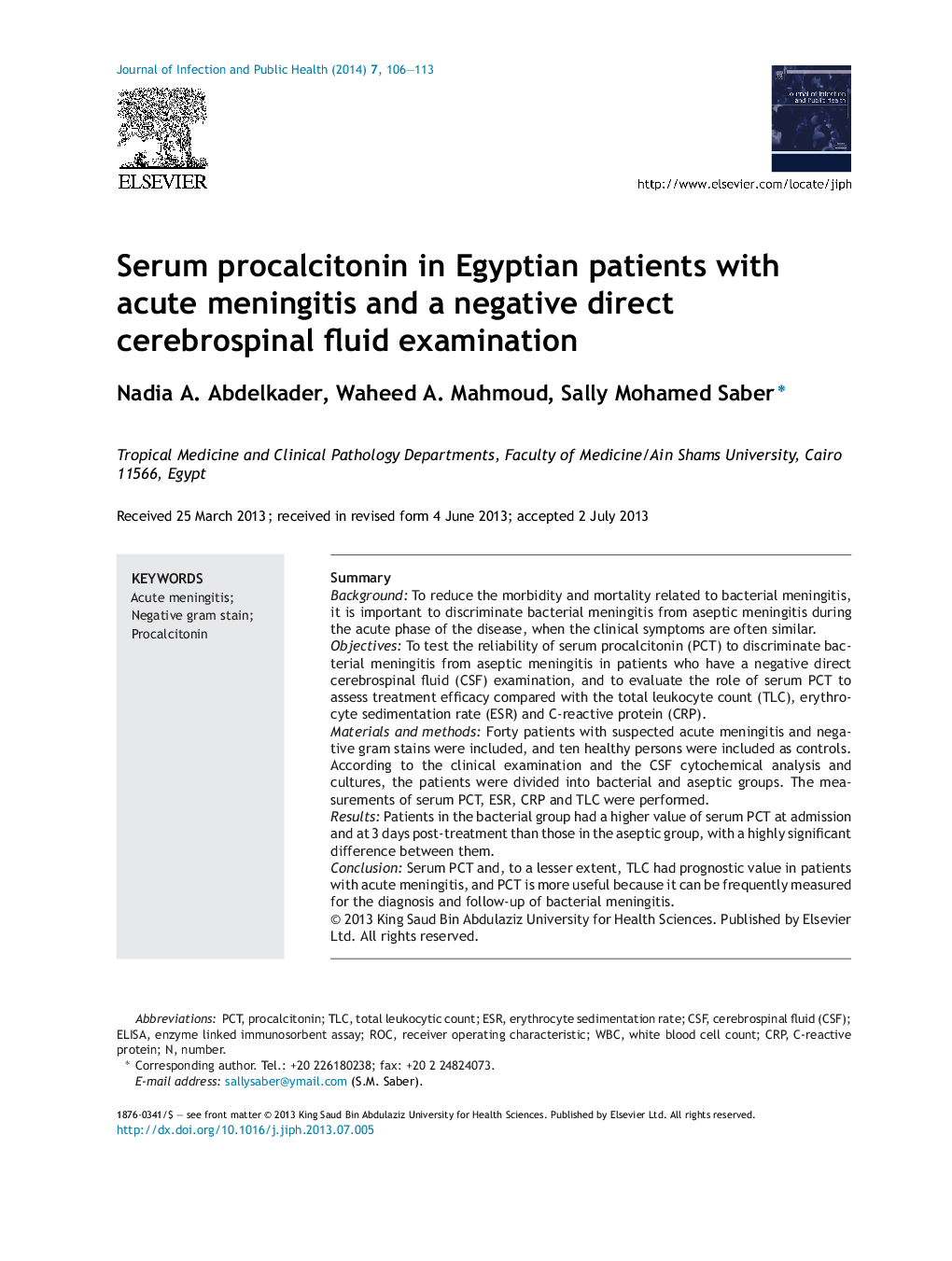| Article ID | Journal | Published Year | Pages | File Type |
|---|---|---|---|---|
| 3406267 | Journal of Infection and Public Health | 2014 | 8 Pages |
SummaryBackgroundTo reduce the morbidity and mortality related to bacterial meningitis, it is important to discriminate bacterial meningitis from aseptic meningitis during the acute phase of the disease, when the clinical symptoms are often similar.ObjectivesTo test the reliability of serum procalcitonin (PCT) to discriminate bacterial meningitis from aseptic meningitis in patients who have a negative direct cerebrospinal fluid (CSF) examination, and to evaluate the role of serum PCT to assess treatment efficacy compared with the total leukocyte count (TLC), erythrocyte sedimentation rate (ESR) and C-reactive protein (CRP).Materials and methodsForty patients with suspected acute meningitis and negative gram stains were included, and ten healthy persons were included as controls. According to the clinical examination and the CSF cytochemical analysis and cultures, the patients were divided into bacterial and aseptic groups. The measurements of serum PCT, ESR, CRP and TLC were performed.ResultsPatients in the bacterial group had a higher value of serum PCT at admission and at 3 days post-treatment than those in the aseptic group, with a highly significant difference between them.ConclusionSerum PCT and, to a lesser extent, TLC had prognostic value in patients with acute meningitis, and PCT is more useful because it can be frequently measured for the diagnosis and follow-up of bacterial meningitis.
